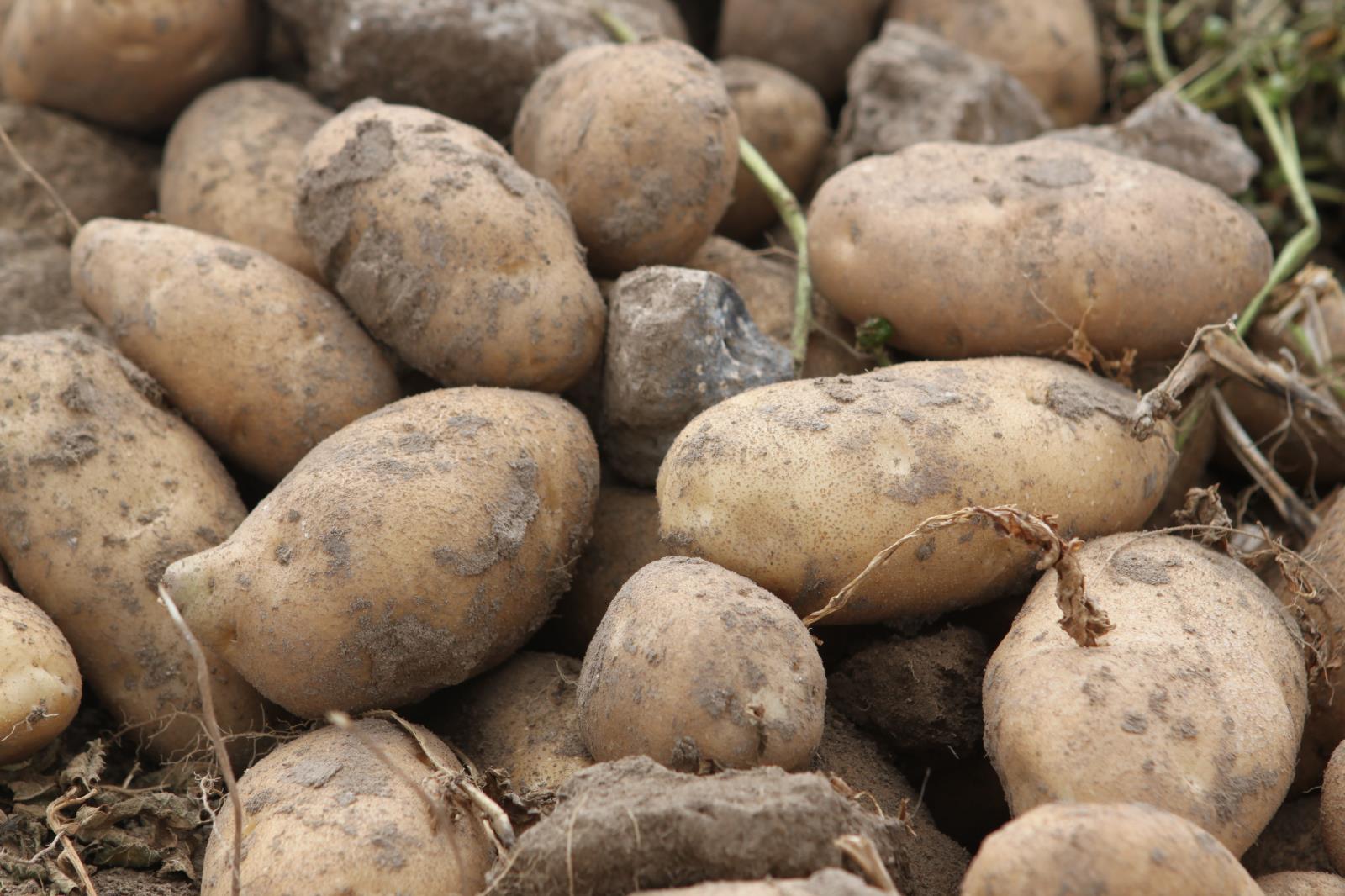Idaho's 2019 potato crop expected to be smaller

By John O’Connell
Intermountain Farm and Ranch
IDAHO FALLS — Leaders in Idaho’s potato industry see signs that the state will produce a smaller crop this fall than in 2018, when growers reported record yields, and the manageable crop size should contribute to a strong marketing year.
Idaho’s planted potato acres either held flat this season or dropped a bit, according to separate planting reports.
USDA’s National Agricultural Statistics Service reported in late June that Idaho farmers planted 315,000 acres, which was the same as last year. Around the same time as USDA’s report was released, United Potato Growers of Idaho issued an acreage estimate that Idaho farmers planted 308,785 acres of spuds, down about 1 percent from the 311,316 acres the organization estimated in its 2018 count.
Travis Blacker, the Idaho Falls-based industry relations director for the Idaho Potato Commission, has more faith in the United count, which is conducted with funding from his organization.
He explained that unlike NASS, which uses a formula to estimate planted acres, United sends representatives to travel the state and physically count every spud field.
“They drive all of the roads, and they’ve got a pretty sophisticated mapping system,” Blacker said.
Per-acre production should also be down this fall, Blacker said. He said this season has been cooler than last season, contributing to slower growth, and growers also enjoyed ideal fall weather last year.
“I’ve been to a lot of different meetings over the summer, and the thing I consistently hear is the crop is behind seven to 10 days,” Blacker said. “They’re not really sure on the size part yet, but I think everyone is saying definitely we’re not going to have the yield we had last year.”
Blacker believes the state has a good mix of acreage planted for the fresh and processed markets, and international demand for Idaho spuds has been encouraging.
“It should be a good year,” Blacker said. “All the right signs are pointing toward a good year.”
Aberdeen farmer Ritchey Toevs said warmer temperatures last season helped Idaho potato crops progress faster.
“Our growing degree days are about 85 percent of a year ago,” he said.
Toevs agrees the crop is more than a week behind its progression at this time last year, and he doesn’t see a scenario in which potato fields will catch up. He said harvest can’t be delayed much beyond Oct. 6 due to the threat of frost, and the bar is set too high to make up ground in the fall, given that weather conditions were optimal last fall.
Toevs anticipates he’ll start harvesting his seed potatoes in Chesterfield on Sept. 15 and he expects commercial harvests from Southeast Idaho to Mud Lake will commence on about Sept. 20.
Toevs believes Idaho should also enjoy some increased demand from buyers in Wisconsin and Eastern Canada.
Quality problems in those regions led some buyers to make last-second contracts with Idaho suppliers, and Toevs said many of them were impressed enough to buy from Idaho again this season.
American Falls farmer Kamren Koompin said his spuds do not appear to be anywhere near as large as they were at this time last year.
“Last year it got hot and stayed hot,” Koompin said. “Last year, everybody was ahead of the curve. The yield is not going to be even close to what it was last year, but last year we set a record.”
Blacker said the IPC has some creative initiatives underway to build demand for Idaho potatoes.
The commission is in its second year of a program to work with retailers and food service companies to improve quality of Idaho’s crop, offering advice such as tips on how to harvest spuds without causing bruising.
The commission is also attempting to promote Idaho as the best location to build the next new fry lines and processing plants.
Still can't find what you are looking for? Find by topic:
- Achievement Award (YF&R)
- Actions Alerts
- Advocacy
- Ag Ambassadors
- American Farm Bureau
- American Farm Bureau Policy Book
- Archive Photos
- Articles
- Board of Directors
- Calendar - State/District
- Calendar - County
- Capitol Reflections
- Collegiate Chapters
- Committee Application Form
- Commodities
- Convention Annual
- County Presidents & Board Information
- County Resource Page
- Delegate Form
- Discount Programs
- Discussion Meet
- Discussion Meet - High School
- Education Programs
- Events
- Excellence Award (YF&R)
- Expense Voucher
- Flickr
- Gem State Producer
- High School Discussion Meet
- High School Speech Contest
- Hope in Idaho Ag
- House of Delegates Credentials Form
- IFBF Board of Directors
- IFBF Policy Book
- IFBF Staff
- Insurance
- Legislative Action Program
- Legislative Issues
- Library
- MAC Trailer
- Magazines
- Map My Benefits
- Member Benefits
- Member Discount
- Membership Application
- Mission Statement
- Moving Agriculture to the Classroom
- Newsletter Sign up
- News Releases
- News Room
- Open Range Law
